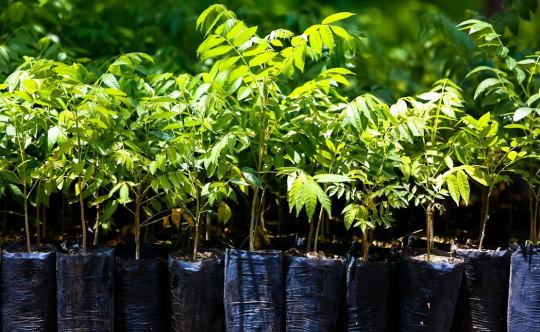#Green building practices
Explore tagged Tumblr posts
Text
#Energy-Efficient Homes#Green Building Practices#Luxury Custom Homes#Sustainable Building#Earth Day#EarthDay2025
3 notes
·
View notes
Text
Basalt Fiber Reinforcement in Construction: A Sustainable Paradigm Shift
Introduction In the contemporary construction landscape, a notable shift towards sustainable and eco-friendly building materials is underway. Among the alternatives gaining prominence is basalt fiber reinforcement, positioning itself as a compelling substitute for traditional steel reinforcement. This transition is fueled by a collective desire to reduce environmental impact and elevate the…

View On WordPress
#alternative to steel reinforcement#basalt fiber applications#basalt fiber properties#Basalt fiber reinforcement#basalt mesh in concrete#BFRP composites#construction industry sustainability#corrosion-resistant materials#durability in construction#eco-friendly building#environmental impact of construction#future of construction materials.#green building practices#lightweight construction materials#seismic resilience in buildings#steel replacement in construction#strength-to-weight ratio#Sustainable Construction Materials#sustainable structural design#thermal insulation in construction
2 notes
·
View notes
Text
Emerging Real Estate Trends: Insights for 2024 - Pritish Kumar Halder
Stay updated with the latest real estate trends shaping the market in 2024 with insights from Pritish Kumar Halder. The real estate landscape is continuously evolving, with key changes driven by technology, urbanization, and environmental considerations. From the rise of sustainable housing solutions to the impact of digital platforms in property transactions, understanding these trends is crucial for buyers, sellers, and investors alike. On pritishkumarhalder.com, discover expert analyses on green building practices, smart home technologies, remote work's influence on housing demands, and more. Pritish Kumar Halder’s blog offers a comprehensive view of what’s next in real estate, helping readers make informed decisions and stay ahead in the competitive property market. Don’t miss out on practical tips and market predictions for navigating the real estate landscape successfully in 2024 and beyond. Explore more on pritishkumarhalder.com for valuable resources and a closer look at emerging trends that matter to today’s real estate community.
#Real State Trend#Real estate trends 2024#Emerging real estate trends#Sustainable housing solutions#Smart home technology in real estate#Influence of remote work on housing#Green building practices#Digital property transactions#Real estate market predictions#Latest real estate insights
0 notes
Text
Our Green Agenda | Robert Leech

Could we be any greener?
We are taking our first step to achieving net zero emissions by setting out Our Green Agenda, with the aim to becoming net zero by 2030
1) One Tree Planted for Each & Every Valuation
To help us offset our carbon footprint, Robert Leech has partnered with One Tree Planted and we pledge to plant a tree for every sales & lettings valuation we carry out until 24th December 2022 and from then on we pledge to plant a tree for every sale. As a potential client or a vendor you can choose where to plant your tree from from countries around the world including the UK. Since 2014, One Tree Planted have planted over 40 million trees in more than 47 countries across the globe. In 2021, they more than doubled their impact from 2020 – with 23.5 million trees! We couldn’t be more excited to be part of this global phenomenon.
2) Bee Friendly with Robert Leech
Since May 2021 we have given out, for free, over 2000 bee friendly wild flower seed packets, equating to more than 10,000 plants. These have been distributed to 15 local primary schools as well as the general public via coffee shops and local events.
3) Reducing our Energy Usage
Robert Leech have three offices across Surrey and a significant contribution to our overall carbon footprint comes from the energy demands of light and heat. We have already put in measures to reduce the amount of electricity and gas we use in each office; turning down the heating, fitting light sensors to reduce usage and installing electrical car charge points at offices were possible.
We are investigating the use of greener forms of transport and introducing more sustainable business practises, such as reducing the amount of paper and plastic we use and working with our suppliers to become more environmentally conscious.
4) We’ll be Travelling Less
Our three offices arrange around 3000 viewing appointments every year so travel to and from properties is one of the largest contributors to our carbon footprint, as our staff accompany prospective buyers and tenants on every viewing.
Recognising this is the area where we are making a big impact, we will be literally taking the first steps by making sure we walk to viewings where ever possible! Diary management will also play a big part: We will create block viewings of properties and also making sure we group viewings by location so we do not waste fuel travelling to and from the office. If applicable, we can also offer virtual viewings, especially if it is a first time viewing and the applicant lives out of the area and has a significant way to travel. This will help us reduce the amount of mileage to and from properties and therefore minimise fuel consumption associated with every property sale and let, whilst still being able to accompany buyers and tenants around a property either physically or online.
Why is Reducing Our Carbon Footprint Important?
Over the past two decades the effects of climate change have accelerated. Considerable evidence exists proving climate change has been exacerbated by human activity. Changes in our post-industrial lifestyles have altered the chemical composition of the atmosphere, generating a build-up of greenhouse gases – primarily carbon dioxide, methane, and nitrous oxide levels – raising the average global temperature.
The consequences are already evident and will continue to worsen unless significant action is taken and quickly. Sea level will continue to rise and local climate conditions to be altered, causing an increase in extreme weather events, affecting forests, crop yields, and water supplies. This can lead to homelessness, famine and conflict as resources become scarcer.
It is vital that all individuals, businesses, organisations and governments work towards the common goal of reducing greenhouse gas emissions.
Original article - https://www.robertleech.com/our-green-agenda/
#Sustainability in Real Estate#Energy-efficient Properties#Green Building Practices#Green Initiatives in Real Estate
0 notes
Text
Construction Adhesives Market Will Reach USD 14,541.9 Million By 2030
The size of the construction adhesives market was USD 9,101.5 million in 2021, and the figure is set to rise at a CAGR of 5.3% in the duration of 2021–2030, and to reach USD 14,541.9 million by the end of this decade, as per P&S Intelligence.

This can be credited to the rising construction sector, and snowballing demand for low-VOC adhesives, including water-based adhesives and pressure-sensitive adhesives.
In 2021, the acrylic category held the largest revenue share of approximately USD 3,862.3, and this number will surge at a CAGR of 5.7% by the end of this decade. This can be ascribed to the fast development of the construction sector in the MEA and APAC regions. Acrylic adhesives are favorite in the construction industry mainly because of their solid bonding with substrates, outstanding water resistance, and better impact strength.
To receive free sample pages of this report@ https://www.psmarketresearch.com/market-analysis/construction-adhesives-market/report-sample
For example, China presently has a large number of airport building projects in the stage of expansion, including, Chengdu Shuangliu International Airport, Guangzhou Baiyun International Airport, and Beijing Capital International Airport. Furthermore, the Chinese government has publicized key strategies for the relocation of 250 million public to new megacities in the coming ten years.
In 2021, the residential category held the largest revenue share, of approximately 60%, credited to the high-volume utilization of construction adhesives in residential constructions.
This can be ascribed to the increasing expenditure in residential construction actions than for commercial and industrial construction. According to an Indian government organization, the ‘Housing for All” scheme is purpose to fetch investments of USD 1.3 trillion in the residential industry by 2025.
#Construction adhesives#Building materials#Structural bonding#Adhesive technology#Infrastructure development#Sustainable construction#High-performance adhesives#Versatile bonding solutions#Waterproofing adhesives#Green building practices#Market trends#Industrial applications#Adhesive innovation#Interior and exterior bonding#Rapid curing adhesives#Adhesive compatibility#Bonding durability#Market growth#Construction industry#Future of adhesive technologies in construction.
0 notes
Text


li tianxi in my more painterly style + lu guang inplick colour study !!
#😊😐#the difference between my regular colouring and the inplick one is kinda insane#my regular colours look so warm but thats cause i mostly use orange-red to build up & shade😭😭#NEVER used that shade of green before so had fun stepping out of my comfort zone w the second one#li tianxi#lu guang#link click#shiguang dailiren#sgdlr#link click fanart#fanart#my art#art#style study#art practice#anyways very happy with both real talk tho i think i dislike digital painting uhhhh😨😨😨#despite thinking it looks so good#the process is so. im neutral i think im neutral but it just takes longer than slapping a multiply layer on top with a pink or a red so#i just notice how much longer it takes#and i think when shading clothes specifically like that is such a large portion of my process im less eager to do it#im starting to understand why everyone is always naked in paintings like i hate you fabric i hate you clothing folds
219 notes
·
View notes
Text


In mid-August, a three year-old lawsuit charging that environmentalist groups were religious extremists comparable to some of the more violent, intolerant, ultra-orthodox Islamic sects collapsed when the attorney failed to meet a re-filing deadline with the U.S. Supreme Court.
The suit had been brought against the Forest Guardians, the Superior Wilderness Action Network, and the U.S. Forest Service by the 125 companies that make up the Associated Contract Loggers (A.C.L.) of northern Minnesota. The loggers were asking for $600,000 in damages and permission to plunder timber from the Superior National Forest.
Lawyers for the A.C.L. argued that deep ecology was actually a religion, and so by extension, environmental groups that espoused its philosophies were cults, and by outlawing timber cutting on so-called “federal land,” the Forest Service was favoring a particular set of religious doctrines and was therefore violating the guarantee of neutrality in matters of religion purportedly vouchsafed in the U.S. Constitution.
According to theological scholars at the logging company syndicate like former executive director, Larry Jones, Deep Ecology is an “earth-centered religion,” a “belief system” that holds that “trees and Man [sic] are equal.” Anti-logging activists who extol the virtues of forested spaces over industry profit and environmental degradation are spiritual zealots, and the government functionaries who are swayed by their proselytizing may turn out to be fanatical closet druids themselves.
Stephen Young, the A.C.L. lawyer and a former Republican Party senatorial candidate, explained his legal action on such esteemed venues as Rush Limbaugh’s radio show by saying that clear-cutting in national forests had been restricted by the Forest Service for no reason other than reverebce for some fringe New Age religion.
A U.S. District Court judge in Minnesota dismissed the case as “frivolous” in February 2000, but the A.C.L. petitioned the Supreme Court last year after reports that Wahabi Islamic extremists were responsible for the blitzkrieg attacks on the World Trade Center and the Pentagon.
“The doctrine of Deep Ecology is the very worldview that gave rise to eco-terrorism. We feel that after the events of September 11, it’s an obligation of the Supreme Court to keep religious fanaticism in check,” Young said. “Just as devout faith in the literal words of various Hadith of Mohammad gave the Taliban license to impose through state power harsh conditions on the women of Afghanistan, so Deep Ecology gives license to its adherents to take extreme actions against those who would live by different beliefs.”
Perhaps the less said about this sleazy episode the better, which is just as well, since it is so hard to get a firm analytic grasp on it because it is sad and sick on so many different levels. For instance, likening the plight of women in Afghanistan to that of lumber barons in northern Minnesota is staggering in its shamelessness, as it has been my experience that women living near industrial logging camps are subjected to at least the same sort of abuse, derision, and masculinist domination as women who had been living in Taliban-controlled Kandahar.
And we all know that if the U.S. government was serious about keeping homicidal religious terrorism in check, then John Ashcroft and the Army of God anti-abortionists would be in the Guantanamo Bay gulag. It was all obviously just a miserable attempt to slander and jam up anti-logging activists with legal action, and it failed.
But I can’t help thinking about the broader philosophical implications of who supported it. I have no idea as to whether or not there are Deep Ecologists involved in Forest Guardians or the Superior Wilderness Action Network (and I suspect that none are to be found among the Forest Service feds), but in demonizing Deep Ecology as an alien fanatical religious practice in this lawsuit, we can see once again how tighly Christianity is bound to capitalist exploitation and ecological destruction.
Deep ecology is not a single doctrine, but rather an ethical sensibility informed by a variety of perspectives on the relationship of hummankind to the whole of nature’s systems. We can oversimplifydeep ecology by saying that its fundamentals include a belief in the intrinsic value of all forms of life as well as the holistic diversity of those life forms. The economic, technological, and ideological beliefs that prop up Western civilization antagonistically threaten the existence and diversity of natural life systems.
Individuals who adhere to the ideas of Deep Ecology are obligated to work towards radically changing those deadly attitudes and social structures. Deep ecology challenges the long-held anthropocentrist notion which entitles humans to take advantage of and destroy wilderness at will and for private profit, a view obviously held sacred by the A.C.L. timber industrialists.
Anthropocentrism derives from core Judeo-Christian values that have been part of the settler-capitalist catechism on this continent since the early seventeenth-century. Consider, for example, the preaching of Puritan minister, John Cotton. In his popular pamphlet of the 1630’s, “God’s Promise to His Plantation,” Cotton claimed that God desired colonists to “take possesion” of land in New England, saying that whosoever “bestoweth culture and husbandry upon it” has an inviolable divine right to it.
The Native Americans, dying in large numbers from exposure to European diseases was proff that God wanted to wipe the slate clean for the Puritans and thereby better facilitate His decree in the Book of Genesis that humans aggresively “subdue” the earth. Christians were the center of the universe, exclusively licensed by Almighty God to dominate the land, eradicate wild nature, and replace it with the purity of civilization. “All the world out of the Church is as wilderness, or at best, a wild field where all manner of unclean and wild beasts live and feed,” Cotton proclaimed in 1642.
There were many others during the period who were at least as enthusiastic about Christ, colonization, and commercial cultivation as Cotton was, and these ideas, linked to distinctly Judeo-Christian models of linear (rather than seasonally cyclical) time, became ingrained in the settler psyche, especially during the era of westward expansion some two centuries later. Justified by the Calvinist capitalism of Adam Smith’s The Wealth of Nations — complete with its fallacious notions about the ennobling “civilizing” powers of wealth, marlets, and economic growth — the implications of Puritan repugnance for the wilderness and wildness on the North American continent becomes depressingly clear.
As inheritors of Puritan fanaticism that have erected the violent, intolerant faith of capitalism, it is individuals and organizations like the A.C.L. who hold a worldview that advances a five hundred year-old campaign of terrorism against entire bioregions and “empowers its adherents to take extreme action against those who would live by different beliefs.”
#deep ecology#environment#Fifth Estate#359#Green Scare#legal system#religion#anarchism#revolution#climate crisis#ecology#climate change#resistance#community building#practical anarchy#practical anarchism#anarchist society#practical#daily posts#communism#anti capitalist#anti capitalism#late stage capitalism#organization#grassroots#grass roots#anarchists#libraries#leftism#social issues
61 notes
·
View notes
Text
like. this guy came back from missing two and a half seasons and he had 18 shot attempts in 19 minutes in his FIRST GAME.... and he was joking afterwards like haha guess nothing's changed.... and now he's in a team w barely anyone of his calibre (except kyrie) getting 2 shot attempts at the half. how did it get to thissssssssssssssss im genuinely going crazy.
#someone give me a time machine NOWWW#going back to the 2022 off season and forcing the fo to start building a good roster.#also locking draymond green out of the practice facility THAT DAY#*muffled screaming*
10 notes
·
View notes
Text

The City Scape
Time: 2 hours 11 minutes
App: IbisPaint X
#digital art#drawing#artwork#artists on tumblr#background practice#cityscape#city#raining#blue green#art#art practice#buildings
1 note
·
View note
Photo
look kids! No green screen!



MARK HAMILL “Star Wars: Episode V - The Empire Strikes Back” BTS › 1980
#star wars#empire state building#real Star Wars#no green screen#practical effects#Star Wars 2#mark hamill
4K notes
·
View notes
Text
As buyer expectations evolve and technology continues to advance, the push toward greener, smarter, and more resource-conscious homes is set to redefine Real Estate Brisbane QLD for years to come.
0 notes
Text
Adapting to Change | How a Construction Cost Estimating Service Reflects Post-Pandemic Architecture Trends
Introduction
The COVID-19 pandemic dramatically reshaped the world in many ways, and architecture and construction were no exception. As businesses, governments, and individuals adjusted to a new reality, architectural trends shifted to reflect the changing needs and priorities. The rise of remote work, health and wellness concerns, and sustainability considerations all influence post-pandemic architecture. For construction professionals, accurately predicting the costs associated with these evolving trends requires expertise and an adaptive approach. A construction cost estimating service plays a crucial role in translating these new architectural trends into budget forecasts that ensure projects align with both contemporary demands and financial realities.
Health and Wellness in Architecture
The post-pandemic world has heightened awareness around health, safety, and wellness, influencing design priorities in both residential and commercial buildings. Features such as improved ventilation, touchless systems, enhanced cleaning protocols, and biophilic design are now at the forefront of architectural planning. Incorporating these features requires more thoughtful material selection, specialized systems, and layout adjustments—all of which affect the overall cost.
A construction cost estimating service helps by:
Calculating costs for enhanced HVAC systems: Modern ventilation systems that improve air quality are now considered a necessity in many buildings. Estimators evaluate the costs of high-performance HVAC systems, including filtration and UV systems to sanitize the air.
Incorporating biophilic design features: The integration of natural elements like indoor plants, green walls, or natural lighting can increase construction costs. Estimators forecast the costs of implementing these sustainable design features, which enhance the occupant's health and well-being.
Factoring in touchless and smart systems: The demand for touchless technologies in elevators, faucets, doors, and lighting has surged. These systems can significantly impact the budget, and estimators need to evaluate both installation and long-term maintenance costs.
Flexibility and Adaptability in Building Design
The pandemic has shown that flexibility in design is more critical than ever. The future of work is likely to involve a hybrid model, with employees spending time both in the office and at home. As a result, buildings must be adaptable, with spaces that can be easily reconfigured to accommodate changing needs. This adaptability requires careful consideration of layout, movable walls, and multipurpose rooms.
A construction cost estimating service assists by:
Assessing costs for modular and flexible construction systems: The use of modular systems that allow for easy reconfiguration of interior spaces can be more expensive upfront, but they offer long-term flexibility. Estimators calculate the initial and potential long-term costs of these systems.
Evaluating the expense of adaptable spaces: Offices that can easily transform into collaborative spaces or quiet zones for remote work require specialized designs and finishes. Cost estimators provide insights into how these flexible spaces impact the overall budget.
Factoring in future-proofing elements: Buildings that are designed to adapt to new technology, office layouts, or residential trends require investments in infrastructure such as extra power outlets, robust Wi-Fi networks, and data cabling. Estimators calculate these future-proofing costs into the initial budget.
Sustainability and Environmental Considerations
The pandemic has increased focus on sustainability, with more individuals and businesses prioritizing environmental impact and energy efficiency. In the post-pandemic era, green building practices are no longer a luxury but an expectation. From net-zero energy buildings to the use of sustainable materials, the integration of sustainability into architecture affects the overall cost structure.
A construction cost estimating service can support these efforts by:
Estimating costs for energy-efficient technologies: Solar panels, energy-efficient windows, green roofs, and sustainable insulation are in high demand as part of eco-conscious building practices. Estimators ensure that the integration of these technologies is adequately budgeted.
Accounting for green certification processes: Many buildings aim to achieve certifications such as LEED or BREEAM. The requirements for these certifications may increase both direct costs and timeframes. Estimators factor these additional requirements into the budget.
Evaluating lifecycle cost benefits: While sustainable materials and energy-efficient designs may increase upfront costs, they often provide long-term savings through lower operational expenses. Estimators incorporate these lifecycle savings into the cost estimate, demonstrating both the immediate investment and the long-term financial benefits.
Changes in Residential Design
The pandemic has also affected the way residential spaces are designed. As more people worked and studied from home, the demand for dedicated home offices, larger living spaces, and outdoor areas increased. Homeowners are seeking spaces that enhance their quality of life and provide greater comfort, privacy, and connection to the outdoors.
A construction cost estimating service helps by:
Estimating the costs for home office and study spaces: Dedicated home offices or study spaces require additional design considerations such as soundproofing, technology integration, and proper lighting. Estimators calculate the costs associated with creating these spaces.
Factoring in outdoor living spaces: Outdoor areas such as patios, gardens, and outdoor kitchens have become essential. Estimators evaluate the costs of landscaping, outdoor furniture, and specialized features like fire pits, ensuring that the outdoor living space is fully integrated into the budget.
Evaluating the impact of larger floorplans: As more people seek larger homes to accommodate home offices and extended family, the costs of materials and labor can increase. Estimators adjust the budget based on changes in square footage and layout.
Conclusion
The post-pandemic era has brought about a new wave of architectural trends focused on health, flexibility, sustainability, and comfort. As architects and builders embrace these trends, construction cost estimating services play a crucial role in ensuring that projects meet both the design requirements and the budget constraints. From advanced HVAC systems to sustainable building materials and adaptable layouts, accurate cost estimations are key to successfully implementing these changes. As the world continues to adapt, construction professionals must remain agile and responsive to the evolving needs of the built environment, ensuring that both current and future construction projects reflect the demands of a post-pandemic society.
#post-pandemic architecture#flexible design#health-conscious buildings#construction estimating service#biophilic design#HVAC system costs#sustainable materials#energy-efficient buildings#hybrid workspaces#modular construction#smart buildings#net-zero buildings#green certifications#home office designs#outdoor living spaces#adaptable buildings#post-COVID office spaces#pandemic architecture trends#touchless technologies#remote work design#smart home features#circular building practices#building flexibility costs#construction cost forecasting#building sustainability#energy-saving construction#design for adaptability#building future-proofing#wellness-oriented construction#workplace design changes
0 notes
Text
Impact of Construction and Demolition Waste and its Use in Buildings
Introduction Construction and demolition (C&D) waste is a significant environmental concern worldwide. The massive amounts of waste generated from construction and demolition activities pose a threat to the environment and human health. However, innovative approaches have emerged to tackle this issue, focusing on recycling and reusing C&D waste in building projects. This article explores the…

View On WordPress
#building construction#C&D waste#carbon footprint#circular economy#Construction and demolition waste#construction industry#environmental challenges#environmental impact#green building#green building certifications#landfill reduction#quality control#recycled materials#recycling#resource conservation#resource efficiency#reuse#standardized regulations#sustainable practices#sustainable waste management#technical limitations#waste management
2 notes
·
View notes
Text
Plywood plays a vital role in achieving green building certifications by providing a sustainable, durable, and eco-friendly construction material. Made from renewable resources, it contributes to energy efficiency, reduced waste, and environmentally conscious building practices. Its versatility makes it an ideal choice for sustainable construction, aligning with standards like LEED and other green certifications.

#Plywood in Green Building#Sustainable Construction Materials#Green Building Certifications#Eco-friendly Plywood Solutions#Plywood for LEED Certification#Sustainable Building Practices#Green Construction with Plywood#Environmentally Friendly Plywood#Sustainable Architecture Materials#Renewable Plywood for Green Buildings#Plywood and Energy Efficiency#Eco-conscious Construction Choices#LEED-certified Plywood Benefits#Green Building Materials#Sustainable Plywood for Builders
0 notes
Text
More Construction Standards in the Philippines
Photo by Elianna Gill This article looks at More Construction Standards in the Philippines. Previously we looked at how electrical and plumbing systems as standard were embedded in the concrete walls. Before I give my opinion on how I will have things done. I want to look at a few other construction standards you will find in the Philippines. Vlogging I have just watched a YouTube video by an…
#Building codes in the Philippines#Building design standards Philippines#Building inspection Philippines#Building materials standards Philippines#Building permit requirements Philippines#Building Safety Philippines#Commercial building standards Philippines#Construction quality control Philippines#Construction standards Philippines#Earthquake building standards Philippines#Energy efficiency standards Philippines#Fire safety regulations Philippines#Green building standards Philippines#Philippine architectural standards#Philippine building code compliance#Philippine construction regulations#Philippines building standards#Residential building codes Philippines#Structural standards Philippines#Sustainable building practices Philippines
0 notes
Text
Government Policies for a Green Economy: Incentives and Regulations

Green Economy A successful transition to a green economy requires a combination of public and private sector efforts, Green Economy with governments playing a crucial role in setting the framework for this transformation. Policies often target sectors such as energy, transportation, agriculture, waste management, and construction, which are significant contributors to environmental impacts. In this context, incentives and regulations serve as two sides of the policy coin, ensuring both the encouragement of sustainable practices and the enforcement of environmental protection.
One of the main goals of government policies for a green economy is to shift economic activity toward more sustainable practices. This involves reducing greenhouse gas emissions, promoting renewable energy, and ensuring that economic growth is decoupled from environmental degradation. To achieve these goals, governments employ a wide range of tools, including tax breaks, subsidies, grants, carbon pricing mechanisms, and strict environmental regulations.
A green economy also emphasizes social inclusiveness, Green Economy ensuring that the transition to sustainability benefits all members of society, particularly vulnerable groups who are most affected by environmental degradation. Green Economy Government policies often include provisions for job creation in green industries, education and training for new skills, and social protection measures to ensure that no one is left behind in the transition.
This section will delve into six key areas of government policies for a green economy: renewable energy incentives, carbon pricing mechanisms, green transportation policies, sustainable agriculture support, waste management and recycling regulations, and financial incentives for green innovation.
Renewable Energy Incentives Green Economy
One of the cornerstones of any green economy policy framework is the promotion of renewable energy sources. Governments have introduced a range of incentives to encourage the production and consumption of renewable energy, such as wind, solar, and hydropower. These incentives are critical for reducing reliance on fossil fuels, which are the primary source of greenhouse gas emissions.
Renewable energy incentives often take the form of subsidies and tax breaks. For instance, many governments offer production tax credits (PTCs) and investment tax credits (ITCs) to companies that generate renewable energy or invest in renewable energy infrastructure. These financial incentives lower the cost of renewable energy projects, making them more competitive with traditional fossil fuel-based energy sources.
Feed-in tariffs (FITs) are another common incentive mechanism. Green Economy Under a FIT program, renewable energy producers are guaranteed a fixed price for the electricity they generate, often over a long-term contract. This provides a stable revenue stream and reduces the financial risk associated with renewable energy investments. Net metering programs, which allow individuals and businesses to sell excess renewable energy back to the grid, are another way governments encourage the adoption of renewable technologies.
Governments also support renewable energy through research and development (R&D) funding. Green Economy By investing in the development of new technologies, governments can help bring down the cost of renewable energy and make it more accessible. Many governments also provide grants and low-interest loans for renewable energy projects, particularly for smaller-scale projects such as rooftop solar installations.
In addition to financial incentives, governments often mandate the use of renewable energy through renewable portfolio standards (RPS). An RPS requires utilities to obtain a certain percentage of their electricity from renewable sources, creating a guaranteed market for renewable energy. This not only supports the growth of the renewable energy industry but also helps reduce the overall carbon footprint of the energy sector.
Green Economy The combination of financial incentives and regulatory mandates has been instrumental in driving the rapid growth of renewable energy in many parts of the world. Countries such as Germany, Denmark, and China have become global leaders in renewable energy production, thanks in large part to strong government policies that promote green energy development.
Carbon Pricing Mechanisms
Carbon pricing is a critical tool in the fight against climate change and a key component of government policies for a green economy. By putting a price on carbon emissions, governments create an economic incentive for businesses and individuals to reduce their carbon footprint. There are two main types of carbon pricing mechanisms: carbon taxes and cap-and-trade systems.
A carbon tax directly sets a price on carbon by levying a tax on the carbon content of fossil fuels. This encourages businesses and consumers to reduce their use of carbon-intensive energy sources and shift toward cleaner alternatives. The revenue generated from carbon taxes is often used to fund green initiatives, such as renewable energy projects or energy efficiency programs, or to provide rebates to low-income households to offset higher energy costs.
Cap-and-trade systems, also known as emissions trading schemes (ETS), work by setting a limit (or cap) on the total amount of greenhouse gas emissions that can be emitted by covered entities, such as power plants or industrial facilities. Companies are issued emission allowances, which they can trade with one another. Companies that can reduce their emissions at a lower cost can sell their excess allowances to companies that face higher costs for reducing emissions. This creates a market for carbon allowances and incentivizes businesses to invest in cleaner technologies.
Both carbon taxes and cap-and-trade systems are designed to internalize the environmental cost of carbon emissions, making it more expensive to pollute and more profitable to invest in sustainable practices. These mechanisms can drive innovation, as businesses seek out new technologies and processes to reduce their carbon liabilities.
Several countries and regions have implemented carbon pricing policies with varying degrees of success. The European Union’s Emissions Trading System (EU ETS) is one of the largest and most established cap-and-trade programs in the world. Canada has implemented a nationwide carbon tax, with revenue returned to households through rebates. In the United States, some states, such as California, have implemented their own cap-and-trade programs in the absence of a national carbon pricing policy.
However, carbon pricing mechanisms face challenges, including political opposition and concerns about economic competitiveness. In some cases, businesses argue that carbon pricing increases costs and puts them at a disadvantage compared to competitors in countries without similar policies. To address these concerns, governments often include provisions to protect industries that are vulnerable to international competition, such as offering rebates or exemptions for certain sectors.
Green Transportation Policies
Transportation is a major source of greenhouse gas emissions, particularly in urban areas. To promote a green economy, governments are implementing a range of policies aimed at reducing emissions from the transportation sector. These policies focus on promoting the use of public transportation, encouraging the adoption of electric vehicles (EVs), and improving fuel efficiency standards.
One of the most effective ways to reduce transportation emissions is to encourage the use of public transportation. Governments invest in expanding and improving public transit systems, such as buses, trains, and subways, to make them more accessible and attractive to commuters. By providing reliable and affordable public transportation options, governments can reduce the number of cars on the road and lower overall emissions.
In addition to improving public transportation, governments are offering incentives for the purchase of electric vehicles (EVs). These incentives often take the form of tax credits or rebates for EV buyers, which help offset the higher upfront cost of electric vehicles compared to traditional gasoline-powered cars. Some governments also offer additional perks for EV owners, such as access to carpool lanes or free parking in city centers.
Governments are also investing in the infrastructure needed to support electric vehicles, such as building charging stations. A lack of charging infrastructure is often cited as a barrier to EV adoption, so governments play a critical role in addressing this challenge. By providing grants or partnering with private companies, governments can help build a network of charging stations that makes EVs a more convenient option for drivers.
Another important component of green transportation policies is improving fuel efficiency standards for cars and trucks. Governments set regulations that require automakers to produce vehicles that meet certain fuel efficiency targets, which helps reduce the amount of fuel consumed and the emissions produced by the transportation sector. Some governments also implement vehicle emissions standards, which limit the amount of pollutants that cars and trucks can emit.
In addition to these policies, governments are encouraging the use of alternative modes of transportation, such as biking and walking. Investments in bike lanes, pedestrian infrastructure, and bike-sharing programs make it easier for people to choose low-emission forms of transportation. These efforts not only reduce emissions but also improve public health by promoting physical activity.
Sustainable Agriculture Support
Agriculture is both a contributor to and a victim of environmental degradation. It is responsible for significant greenhouse gas emissions, deforestation, water use, and pollution from fertilizers and pesticides. At the same time, agriculture is highly vulnerable to the impacts of climate change, including more frequent droughts, floods, and changing weather patterns. As a result, governments are increasingly focusing on promoting sustainable agricultural practices as part of their green economy policies.
One of the key ways governments support sustainable agriculture is through financial incentives for farmers who adopt environmentally friendly practices. These incentives can take the form of subsidies, grants, or low-interest loans for practices such as organic farming, agroforestry, and conservation tillage. By providing financial support, governments encourage farmers to invest in sustainable practices that might otherwise be cost-prohibitive.
Governments also provide technical assistance and education to help farmers transition to more sustainable practices. This can include training programs on topics such as water conservation, soil health, and pest management, as well as access to research and technology that supports sustainable farming. Extension services, which provide hands-on assistance to farmers, are another important tool for promoting sustainable agriculture.
In addition to financial and technical support, governments implement regulations to reduce the environmental impact of agriculture. These regulations can include restrictions on the use of certain pesticides and fertilizers, requirements for buffer zones to protect water sources from agricultural runoff, and mandates for the reduction of greenhouse gas emissions from livestock and manure management.
Governments are also working to promote more sustainable food systems by encouraging the consumption of locally produced and organic foods. Public procurement policies, which require government institutions such as schools and hospitals to purchase a certain percentage of their food from sustainable sources, are one way governments support the development of local, sustainable food systems.
Another important aspect of sustainable agriculture policies is protecting biodiversity and promoting ecosystem services. Governments often provide incentives for farmers to preserve natural habitats on their land, such as wetlands, forests, and grasslands, which provide important ecosystem services such as carbon sequestration, water filtration, and pollination. By promoting biodiversity and ecosystem health, governments help ensure that agricultural systems are more resilient to environmental changes.
Waste Management and Recycling Regulations
Effective waste management is a critical component of a green economy. Governments play a key role in regulating waste disposal, promoting recycling, and encouraging the reduction of waste generation. These efforts are aimed at reducing the environmental impact of waste, including greenhouse gas emissions from landfills, pollution from improper disposal, and the depletion of natural resources through excessive consumption.
One of the main ways governments regulate waste is by setting standards for waste disposal. This includes regulating landfills, incinerators, and hazardous waste facilities to ensure that they operate in an environmentally responsible manner. Governments also implement bans or restrictions on certain types of waste, such as single-use plastics, to reduce the amount of waste that ends up in landfills or the environment.
In addition to regulating waste disposal, governments are increasingly focusing on promoting recycling and waste reduction. Many governments have implemented extended producer responsibility (EPR) programs, which require manufacturers to take responsibility for the disposal of the products they produce. This can include requirements for companies to fund recycling programs or take back products at the end of their life cycle.
Governments also implement policies to encourage households and businesses to recycle more. This can include providing curbside recycling services, setting recycling targets, and offering incentives for recycling, such as deposit return schemes for beverage containers. Public awareness campaigns and education programs are also important tools for promoting recycling and waste reduction.
In some cases, governments use economic instruments to promote waste reduction, such as charging fees for waste disposal or providing financial incentives for businesses that reduce waste. Pay-as-you-throw programs, which charge households based on the amount of waste they generate, are one example of how governments use pricing mechanisms to encourage waste reduction.
Another important component of waste management policies is promoting the circular economy, which focuses on keeping materials in use for as long as possible through recycling, reusing, and remanufacturing. Governments support the circular economy by providing incentives for businesses that adopt circular practices, such as designing products for durability and recyclability, and by setting targets for reducing waste and increasing recycling rates.
Source :
Government Policies for a Green Economy: Incentives and Regulations
#Carbon Pricing Mechanisms#Circular Economy Policies#Clean Energy Subsidies#Climate Change Mitigation Strategies#Climate Resilience Planning#Community Sustainability Programs#Eco-Friendly Transportation Initiatives#Eco-Tourism Development Strategies#Energy Efficiency Standards#Environmental Policy Frameworks#Environmental Protection Regulations#Government Grants For Green Projects#Government Policies For A Green Economy#Green Building Regulations#Green Job Creation Initiatives#Green Tax Incentives#Incentives For Energy Audits#Incentives For Sustainable Development#Investment In Green Technologies#Low-Emission Vehicle Incentives#Pollution Control Policies#Public Transport Expansion Regulations#Regulations Promoting Renewable Energy#Renewable Energy Certificates#Smart City Regulations#Sustainable Agriculture Policies#Sustainable Forestry Practices#Sustainable Urban Development Policies#Waste Management Policies#Water Conservation Regulations
1 note
·
View note